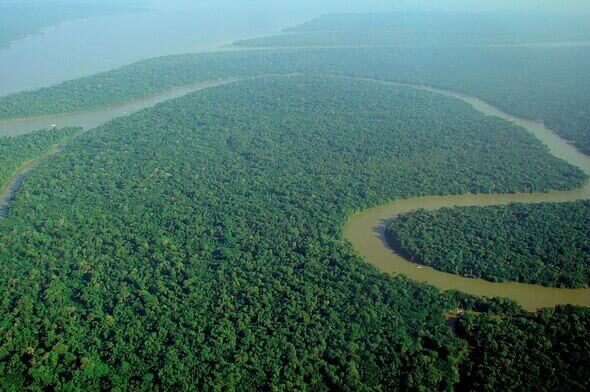
A recent study has revealed alarming projections for the future of the Amazon rainforest, suggesting that up to half of its vast expanse could reach a critical tipping point by 2050.
This is due to a convergence of factors including water stress, deforestation, and climate disruption.
Led by Bernardo Flores from the Federal University of Santa Catarina, Brazil, the study represents the most comprehensive analysis to date of the multifaceted impacts of human activity and global climate change on the Amazon ecosystem.
The study’s findings, published in Nature, underscore the urgent need for international cooperation to address the escalating threats facing the Amazon. Flores expressed surprise at the study’s results, which indicated a potential shift from gradual forest decline to rapid collapse earlier than previously anticipated.
The severity of the situation necessitates global action, as localised efforts to halt deforestation will prove insufficient without significant reductions in global CO2 emissions.
Traditionally resilient to climatic fluctuations over millions of years, the Amazon now faces unprecedented stress from drought, heatwaves, fires, and rampant land clearance, even in its remote interior regions. These stressors have disrupted the forest’s ecological balance, leading to decreased rainfall in many areas and transforming what was once a carbon sink into a carbon emitter.
Concerns about an Amazon tipping point have circulated for decades, with earlier models suggesting a critical threshold would be reached when 20% to 25% of the forest is cleared. However, the new study delves deeper, examining five drivers of water stress and identifying critical thresholds that, if surpassed, could trigger widespread forest collapse at local, regional, or even biome-wide scales.
Predictions indicate that by 2050, between 10% and 47% of Amazonian forests could be exposed to compounding disturbances, potentially leading to unexpected ecosystem-wide transitions with far-reaching implications for regional climate patterns.
To mitigate these risks, the study emphasises the urgent need to establish a safe boundary, limiting deforestation to 10% of the Amazon region while keeping global warming within 1.5°C above pre-industrial levels. However, the study highlights that this boundary has already been breached, with 15% of the Amazon cleared and an additional 17% degraded by human activities.
Using a combination of ground-level data, historical indicators, and advanced computer modelling, the study projects multiple potential ecosystem trajectories, including the transformation of large swathes of the Amazon into savannas or degraded forests characterised by increased fire activity and drought.
Rising temperatures and shifting rainfall patterns further exacerbate the Amazon’s vulnerability, with increased dry season temperatures and alterations in precipitation threatening forest resilience and biodiversity. These changes not only imperil the Amazon’s vast store of carbon and its crucial role in regional climate regulation but also endanger the livelihoods of millions of people who depend on the forest for sustenance and ecological services.
The study also underscores the limitations of existing climate models, which fail to capture the complex interactions between different disturbances or account for the diverse effects experienced by various forest types. Addressing these gaps in understanding is essential for developing effective strategies to preserve the Amazon’s ecological integrity and mitigate the potentially catastrophic impacts of climate change.
“The recent El Niño shows how everything is happening now faster than we think,” Flores said.
“We have to expect things happening earlier than we thought. We need to address this with a very precautionary approach. We must reach net zero emissions and net zero deforestation as quickly as possible. It needs to be done now. If we lose the Amazon, it would be problematic for humanity.”
——————————————————————————
At Natural World Fund, we are passionate about stopping the decline in our wildlife.
The decline in our wildlife is shocking and frightening. Without much more support, many of the animals we know and love will continue in their decline towards extinction.
When you help to restore a patch of degraded land through rewilding to forests, meadows, or wetlands, you have a massive impact on the biodiversity at a local level. You give animals a home and food that they otherwise would not have had, and it has a positive snowball effect on the food chain.
We are convinced that this is much better for the UK than growing lots of fast-growing coniferous trees, solely to remove carbon, that don’t actually help our animals to thrive.
This is why we stand for restoring nature in the UK through responsible rewilding. For us, it is the right thing to do. Let’s do what’s right for nature!
Donate today at https://naturalworldfund.com/ and join in the solution!

